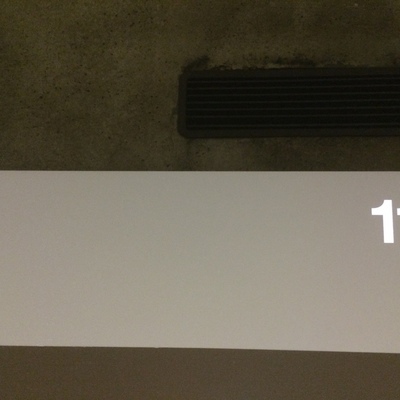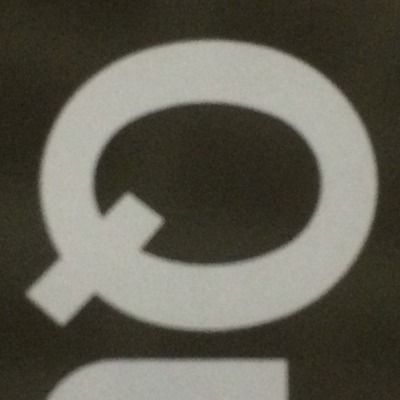Here are the answers to whichWMATA week 41
On Tuesday, we featured the forty-first issue of our “whichWMATA” series. This week, all five photos were guest submissions from reader Peter K.
We got 34 guesses this week. Ten of you got all five right. Great job, Andy L, DAR, Justin…., Solomon, AGC, Mike B, Mr. Johnson, FN, Spork!, and Fran.

Image 1: Metro Center
The first three images looked hard. But despite one commenter who called them “too ambiguous,” you had everything you needed to solve those three and the fourth even if you’ve never actually seen the subjects of these photos. The fifth image was a bit harder.
The first image is a picture of a sign at Metro Center. Two clues give it away. First, note how there are two colors on the sign: A dark gray at the bottom and a lighter gray above. In Metro’s new wayfinding, the station and line name is in the darker color, and directions to exits from the station are in the lighter color. Not every station has undergone the signage upgrade, so that should also have helped you narrow this down.
If you knew that, you also knew that the text in the upper right refers to an exit rather than a station name or a line. You can clearly make out a 1, and it appears to be followed by another 1, so it must be an 11. You can tell that this sign is referring to the 11th Street exit from Metro Center because no other station has an exit to 11th Street. Twenty-three of you got this one right.

Image 2: Judiciary Square
From the text on the second image, you should have been able to narrow this down immediately to one of the four “Square” stations (we featured two last week). The other clue is the text at the bottom.
Several of you correctly deduced that it is the word “Silver.” And from that, you guessed Virginia Square. But that’s not right. You can also see the top of a capital “S,” which means the text actually says “Silver Spring.” Specifically, it’s a line that says “To Glenmont via Silver Spring.” And that makes this station the only “square” on the Red Line: Judiciary Square. Twenty-four guessed correctly.

Image 3: Archives
The next image was a little tricky. You can see a capital Q followed by the letter “u.” The other clue is the vertical orientation. What does that tell us? Vertical text only appears on station name pylons, which means this must be a station name, so it’s another way to know it doesn’t refer to the Q Street exit from Dupont Circle in case you missed the “u.”
Since this is a capital letter, it must be at the start of a word in a station name, not a letter in the middle, like a “square.” And that means it’s Archives-Navy Mem’l-Penn Quarter. Twenty-five of you figured it out.

Image 4: Pentagon
The fourth image was another one you could have guessed even if you’ve never seen this sign. With the exception of the new branch between the Orange and Silver at East Falls Church, a sign like this appears in all the stations right before lines branch.
From the photo, you can tell that this is the station right before the Blue and Yellow branch. It can’t be King Street since this station is underground. And besides, the text on the sign is for Addison Road and Mount Vernon Square. So this must be Pentagon. The slope of the vault is the result of Pentagon’s split-level arrangement, and is incidentally a clue as well. Twenty-nine got this one right.

Image 5: Capitol Heights
Finally, the last image was the hardest. This is Capitol Heights. There aren’t many clues to help out with this one, but you can tell from the image that the station is not in a particularly dense area. The canopy could mean that it’s an underground station, but some aboveground stations (like College Park and Brookland) have these canopies for their tunnel entrances.
Two clues make this definitive. First, you can see a generator peeking out from behind the pylon. If you were able to narrow this down to a few stations, you could have used Google Maps to confirm your choice by seeing if there was a generator next to the escalator entrance.
The other clue is the grass, specifically around the pylon. Almost all of Metro’s exterior pylons sit on the sidewalk. Capitol Heights is one of the only places where the pylon isn’t mounted on a paved surface. Also, because the pylon is farther from the escalator shaft than you’d find in an urban area, you can tell it’s in a suburban setting. fourteen of you got this one correct.
Thanks to everyone for playing! Great work. Stay tuned. We’ll have five more images for you next Tuesday.
Thanks again to Peter K for submitting photos. If you think you have what it takes, email your photos to whichwmata@ggwash.org.
